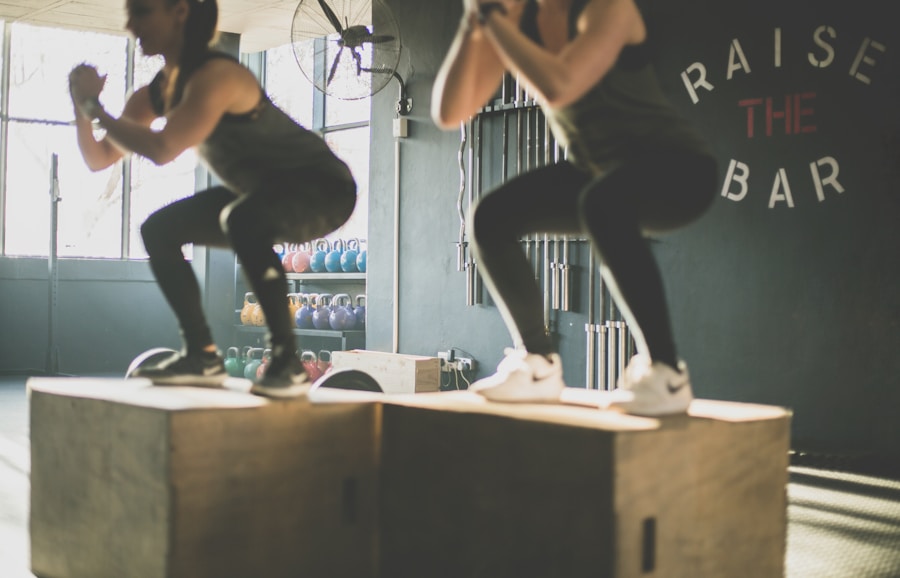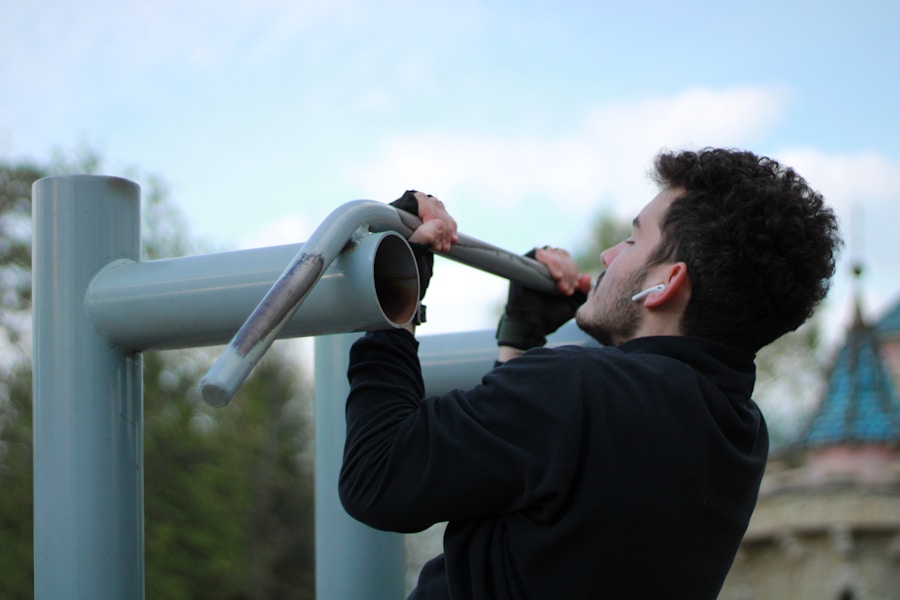Quad exercises play a crucial role in any comprehensive fitness regimen. The quadriceps, located at the front of the thigh, are essential for various movements, including walking, running, and jumping. Strengthening these muscles not only enhances athletic performance but also contributes to overall stability and balance.
A well-developed set of quadriceps can improve posture and reduce the risk of injuries, particularly in the knees and hips, which are often vulnerable during physical activities. Moreover, focusing on quad exercises can lead to improved functional strength. This is particularly beneficial for individuals who engage in sports or activities that require explosive movements.
By incorporating targeted quad workouts into their routines, athletes can enhance their power and speed, making them more competitive in their respective fields. Additionally, strong quadriceps can aid in daily activities, making tasks such as climbing stairs or lifting objects easier and more efficient.
Key Takeaways
- Understanding the importance of quad exercises is crucial for building lower body strength and stability.
- The quadriceps are a group of four muscles located in the front of the thigh, and they play a key role in everyday movements and athletic performance.
- Strong quadriceps can help improve balance, prevent injuries, and enhance overall athletic performance.
- Proper form and technique are essential for maximizing the effectiveness of quad exercises and minimizing the risk of injury.
- Incorporating quad exercises into your fitness routine can help you achieve a killer lower body workout and improve your overall strength and endurance.
The Anatomy of the Quadriceps
The quadriceps muscle group consists of four distinct muscles: the rectus femoris, vastus lateralis, vastus medialis, and vastus intermedius. Each of these muscles plays a unique role in knee extension and hip flexion. The rectus femoris is the only muscle in the group that crosses both the hip and knee joints, making it particularly important for activities that involve both flexion and extension.
The vastus lateralis and vastus medialis are located on the outer and inner sides of the thigh, respectively, while the vastus intermedius lies beneath the rectus femoris.
Understanding this anatomy is vital for anyone looking to effectively target their quadriceps during workouts.
Each muscle contributes to the overall strength and functionality of the legs, and recognizing their individual roles can help individuals tailor their exercises to achieve balanced development.
This knowledge also aids in preventing imbalances that could lead to injuries or hinder performance.
Benefits of Strong Quadriceps
Developing strong quadriceps offers a multitude of benefits that extend beyond mere aesthetics. One of the primary advantages is enhanced athletic performance. Strong quads contribute significantly to explosive movements such as sprinting and jumping, allowing athletes to perform at their peak.
Additionally, well-conditioned quadriceps support better endurance during prolonged physical activities, reducing fatigue and improving overall stamina. Beyond athleticism, strong quadriceps also play a vital role in injury prevention. By stabilizing the knee joint and supporting proper alignment during movement, robust quads can help mitigate the risk of common injuries such as strains and tears.
Furthermore, they assist in maintaining proper biomechanics during various activities, which is essential for long-term joint health. As a result, individuals with strong quadriceps are often able to engage in physical activities with greater confidence and reduced discomfort. For more information on quad workouts for men, visit AthleanX.
Top Quad Exercises for Building Strength
| Exercise | Description | Muscles Targeted | Equipment |
|---|---|---|---|
| Squat | Lower body exercise where the individual lowers their hips from a standing position and then stands back up. | Quadriceps, hamstrings, glutes | Barbell, squat rack |
| Lunges | Exercise where the individual takes a big step forward and lowers their body until both knees are bent at a 90-degree angle. | Quadriceps, hamstrings, glutes | Body weight, dumbbells |
| Leg Press | Exercise where the individual pushes a weighted platform using their legs. | Quadriceps, hamstrings, glutes | Leg press machine |
| Step-Ups | Exercise where the individual steps onto a raised platform and then steps back down. | Quadriceps, hamstrings, glutes | Box or bench |
When it comes to building strength in the quadriceps, several exercises stand out as particularly effective. Squats are a foundational movement that targets the entire lower body, with a significant emphasis on the quads. Variations such as front squats or goblet squats can further isolate the quadriceps while also engaging the core for added stability.
Lunges are another excellent choice; they not only work the quads but also promote balance and coordination. Leg presses are also highly effective for targeting the quadriceps. This machine-based exercise allows individuals to lift heavy weights while maintaining proper form, making it an excellent option for those looking to increase strength without excessive strain on the back.
Additionally, step-ups provide a functional movement that mimics everyday activities while effectively engaging the quads. Incorporating a variety of these exercises into a workout routine can lead to significant improvements in quad strength.
How to Properly Perform Quad Exercises
Proper form is essential when performing quad exercises to maximize effectiveness and minimize the risk of injury. For squats, individuals should ensure their feet are shoulder-width apart, with toes slightly pointed outward. As they lower into the squat, it’s crucial to keep the chest up and back straight while pushing through the heels to return to standing.
This technique helps engage the quadriceps effectively while protecting the knees. Similarly, when executing lunges, maintaining an upright posture is key. The front knee should not extend beyond the toes during the lunge; instead, it should remain aligned with the ankle to prevent undue stress on the joint.
For leg presses, individuals should adjust the seat so that their knees form a 90-degree angle at the starting position. This ensures that they are working within a safe range of motion while effectively targeting the quadriceps.
Tips for Maximizing Quad Workouts
Progressive Overload for Continued Strength Gains
Incorporating progressive overload is crucial for achieving continued strength gains. This can be achieved by gradually increasing weights or resistance levels over time, allowing individuals to challenge their muscles and promote growth.
Varying Rep Ranges for Targeted Muscle Development
Varying rep ranges can stimulate different muscle fibers, leading to more comprehensive muscle development. For instance, lower reps with heavier weights can build strength, while higher reps with lighter weights can improve endurance. By incorporating a mix of rep ranges, individuals can target different muscle fibers and promote overall muscle growth.
Supersets and Circuit Training for a Comprehensive Lower Body Workout
Incorporating supersets or circuit training into quad workouts can create a more comprehensive lower body workout. By pairing quad exercises with complementary movements, such as hamstring curls or calf raises, individuals can promote balanced muscle development and improve overall lower body strength. Additionally, this approach can help reduce workout time and increase overall efficiency.
Adequate Rest for Optimal Recovery and Performance
Ensuring adequate rest between sets is crucial for optimal recovery and performance during subsequent exercises. This allows individuals to recover fully and perform at their best, leading to more effective workouts and better overall results.
Incorporating Quad Exercises into Your Fitness Routine
Integrating quad exercises into a fitness routine requires thoughtful planning to ensure balanced development across all muscle groups. Ideally, individuals should aim to include quad-focused workouts at least once or twice a week within their overall training schedule. This could be part of a dedicated leg day or incorporated into full-body workouts where lower body exercises are emphasized.
Additionally, it’s beneficial to pair quad exercises with complementary movements targeting other muscle groups. For example, combining squats with upper body exercises like bench presses can create a well-rounded workout session that maximizes time spent in the gym. Individuals should also consider their personal fitness goals when determining how frequently to include quad exercises; those aiming for hypertrophy may benefit from more frequent sessions compared to those focused on endurance.
Avoiding Common Mistakes When Training Quads
While training quads can be highly effective, there are common pitfalls that individuals should be aware of to avoid injury and ensure optimal results. One frequent mistake is neglecting proper warm-up routines before engaging in intense quad workouts. Failing to warm up can lead to muscle strains or tears; therefore, dynamic stretches targeting the legs should be incorporated prior to any heavy lifting.
Another common error is using improper form during exercises such as squats or lunges. Individuals may be tempted to lift heavier weights without mastering their technique first, which can lead to injuries over time. It’s crucial to prioritize form over weight; starting with lighter loads allows individuals to focus on executing movements correctly before progressing to heavier weights.
The Best Quad Exercises for a Killer Workout
For those seeking a killer workout that effectively targets the quadriceps, several standout exercises should be included in any routine. Squats remain a top choice due to their versatility and effectiveness; variations like sumo squats or Bulgarian split squats can add variety while still focusing on quad development. Lunges also offer numerous variations—such as reverse lunges or walking lunges—that keep workouts fresh and challenging.
Leg extensions are another excellent exercise specifically designed to isolate the quadriceps. This machine-based movement allows individuals to focus solely on their quads without engaging other muscle groups excessively. Finally, incorporating plyometric exercises like jump squats or box jumps can provide an explosive element to quad training while enhancing overall power and agility.
By combining these exercises into a cohesive workout plan, individuals can achieve impressive results in their quest for stronger quadriceps.




